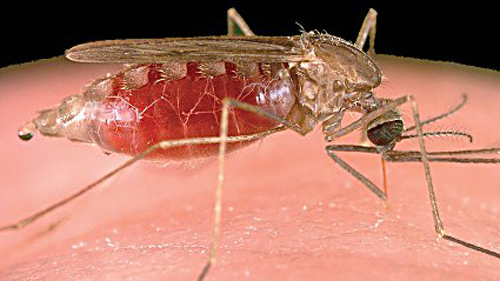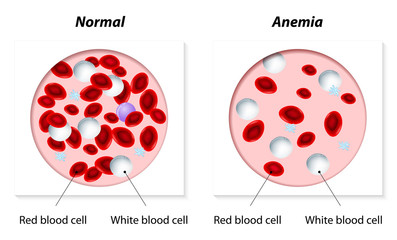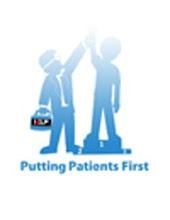The effects of noise on hearing vary among people. Some people's ears are more sensitive to loud sounds, especially at certain frequencies. (Frequency means how low or high a tone is.) But any sound that is loud enough and lasts long enough can damage hearing and lead to hearing loss. Learn more>> http://healthlibrary.com/harmful_noise_levels.htm
Wednesday, September 30, 2015
Do Miracles Happen?
A Free Talk On Topic "Do Miracles Happen?" By Col. Amarjit Nagi & Mrs. Chandra Nagi on 29th September 2015 At HELP
Tuesday, September 29, 2015
Ideal Family Medical Practice
A Free Talk On Topic "Ideal Family Medical Practice" By Dr. Prakash Khalap on 28th September 2015 At HELP
Personality Development in Spirituality- Part 2
A Free Talk On Topic "Personality Development in Spirituality- Part 2" By Mr. Vishal Mandot on 26th September 2015 At HELP
Monday, September 28, 2015
Anemia
Having anemia means you don't have enough red blood cells . Your body needs these cells to carry oxygen from your lungs to the rest of your body.
Anemia is fairly common. It's often easily treated. Sometimes, though, it's serious. Learn more>> http://healthlibrary.com/anemia.htm
Saturday, September 26, 2015
Attention Deficit Hyperactivity Disorder (ADHD)
Attention deficit hyperactivity disorder (ADHD) is a condition in which a person has trouble paying attention and focusing on tasks, tends to act without thinking, and has trouble sitting still. It may begin in early childhood and can continue into adulthood. Without treatment, ADHD can cause problems at home, at school, at work, and with relationships. In the past, ADHD was called attention deficit disorder (ADD). Learn more>> http://healthlibrary.com/adhd.htm
Channelising with Higher Masters
A Free Talk On Topic "Channelising with Higher Masters" By Ms. Nalini Dave on 25th September 2015 At HELP
Friday, September 25, 2015
Healthy Eating
Most people have heard that healthy eating is important. But it can be hard to know what healthy eating means. Our topics can teach you how to eat well, whether your goal is to feel good, manage your weight, or prevent health problems. You will also find plenty of information about nutrition for health conditions such as diabetes, heart disease, food allergies, digestive problems, and eating disorders.
To learn more, browse our Healthy Eating topics or start with these:
How do you get started on healthy eating?
Healthy eating starts with learning new ways to eat, such as adding more fresh fruits, vegetables, and whole grains and cutting back on foods that have a lot of fat, salt, and sugar.
A change to healthier eating also includes learning about balance, variety, and moderation.
- Aim for balance.
- Look for variety.
- Practice moderation.
Why pay attention to what you eat?
Healthy eating will help you get the right balance of vitamins, minerals, and other nutrients. It will help you feel your best and have plenty of energy. It can help you handle stress better.
Healthy eating is one of the best things you can do to prevent and control many health problems, such as:
- Heart disease.
- High blood pressure.
- Type 2 diabetes.
- Some types of cancer.
Is healthy eating the same as going on a diet?
Healthy eating is not a diet. It means making changes you can live with and enjoy for the rest of your life.
Diets are temporary. Because you give up so much when you diet, you may be hungry and think about food all the time. And after you stop dieting, you also may overeat to make up for what you missed.
Eating a healthy, balanced variety of foods is far more satisfying. And if you match that with more physical activity, you are more likely to get to a healthy weight—and stay there—than if you diet.
How do you make healthy eating a habit?
First, think about your reasons for healthier eating. Do you want to improve your health? Do you want to feel better? Are you trying to set an example for your kids?
Next, think about some small changes you can make. Pick ones you can keep doing.
- Don't try to change everything at once.
- Set an easy goal you can reach, like having a salad and a piece of fruit each day.
- Make a long-term goal too, such as having one vegetarian dinner a week.
Where can you get support?
Having support from others can be a huge help. The more support you have, the easier it will be to make changes. Ask family and friends to practice healthy eating with you. Have them help you make meals, and share healthy, delicious recipes and cooking tips.
If you need more help, talk to your doctor or a registered dietitian. Look online for groups that support healthy eating and share success stories.
Neuro Dynamic Management– Fat Loss
A Free Talk On Topic "Neuro Dynamic Management– Fat Loss" By Mr. Anand Ghurye on 24th September 2015 At HELP
Thursday, September 24, 2015
Osteoporosis

What is osteoporosis?
Osteoporosis is a disease that affects your bones. It means that you have bones that are thin and brittle with lots of holes inside them like a sponge. This makes them easy to break. Osteoporosis can lead to broken bones (fractures) in the hip, spine, and wrist. These fractures can be disabling and may make it hard for you to live on your own.
Osteoporosis affects millions of older adults. It usually strikes after age 60. It's most common in women, but men can get it too.
What causes osteoporosis?
It's caused by a lack of bone strength or bone density. As you age, your bones get thinner naturally. But some things can make you more likely to have the severe bone thinning of osteoporosis. These things are called risk factors.
Age, gender, and body type risks
- Your age. Your risk goes up as you get older.
- Being a woman who has gone through menopause. After menopause, the body makes less estrogen. Estrogen protects the body from bone loss.
- Having a slender body frame
Family history risks
- Your family background - Osteoporosis tends to run in families.
- Your race - People of European and Asian background are most likely to get osteoporosis.
Lifestyle risks
- Smoking
- Not getting enough weight-bearing exercise
- Drinking too much alcohol
- Not getting enough calcium and vitamin D
What are the symptoms?
Osteoporosis can be very far along before you notice it. Sometimes the first sign is a broken bone in your hip, spine, or wrist after a bump or fall.
As the disease gets worse, you may have other signs, such as pain in your back. You might notice that you are not as tall as you used to be and that you have a curved backbone.
How is osteoporosis diagnosed?
Your doctor will ask about your symptoms and do a physical exam. You may also have a test that measures your bone thickness (bone density test) and your risk for a fracture.
If the test finds that your bone thickness is less than normal but is not osteoporosis, you may have osteopenia.
It's important to find and treat osteoporosis early to prevent bone fractures. Experts advise bone density testing for women age 65 and older. If you have a higher risk for fractures, it's best to start getting the test sooner.
How is it treated?
Treatment for osteoporosis includes medicine to reduce bone loss and to build bone thickness. Medicine can also give you relief from pain caused by fractures or other changes to your bones.
It's important to get enough calcium and vitamin D and take prescribed medicine for the disease.
You can slow osteoporosis with new, healthy habits. If you smoke, quit. Get plenty of exercise. Walking, jogging, dancing, and lifting weights can make your bones stronger.
Eat a healthy mix of foods that include calcium and vitamin D. Try yogurt, cheese, and milk (for calcium). Eat eggs, fatty fish, and fortified cereal (for vitamin D).
Making even small changes in how you eat and exercise, along with taking medicine, can help prevent a broken bone.
When you have osteoporosis, it's important to protect yourself from falling. Reduce your risk of breaking a bone by making your home safer. Make sure there's enough light in your home. Remove throw rugs and clutter that you may trip over. Put sturdy handrails on stairs. Try exercises to increase your strength and balance.
Our topics will teach you about
- Cause
- Symptoms
- What Happens
- What Increases Your Risk
- When To Call a Doctor
- Exams and Tests
- Treatment Overview
- Prevention
- Home Treatment
- Medications
- Surgery
- Other Treatment
Browse health information
Healthwise® Knowledgebase
Follow us on:
Homeopathy for Digestive Disorders
A Free Talk On Topic "Homeopathy for Digestive Disorders" By Dr. Sonal Motta on 23rd September 2015 At HELP
Wednesday, September 23, 2015
Integrated Healing
A Free Talk On Topic "Integrated Healing" By Ms. Varshha Paatkar on 22nd September 2015 At HELP
Dengue Fever
What is dengue fever?
Dengue (say "DEN-gay") fever is a disease caused by a virus that is carried by mosquitos. Mild cases cause a rash and flu-like symptoms. Some people, especially children, can get more serious forms of the illness, known as dengue hemorrhagic fever and dengue shock syndrome.
What causes dengue fever?
Dengue fever is spread through the bite of mosquitoes that carry the virus. The virus cannot spread from person to person through casual contact. People who have dengue fever should be protected from mosquito bites. If a mosquito bites an infected person, the mosquito becomes infected with the virus and can pass it to other people.
Outbreaks are common in many countries in Latin America and Southeast Asia. The disease also occurs in Africa, parts of the Middle East, the Western Pacific, Puerto Rico, and other tropical and subtropical areas.footnote Travelers visiting these regions may become infected.
Dengue fever is rare in the United States. But there have been cases of dengue fever reported in Florida and areas of the southwestern U.S., especially along the border between Texas and Mexico.footnotefootnote
What are the symptoms?
Symptoms of dengue fever may be mild or severe. In mild cases, common symptoms include:
- A sudden high fever, up to 106°F (41°C).
- A headache.
- Eye pain.
- Joint and muscle pain.
- A rash.
- Nausea, vomiting, and loss of appetite.
The fever usually lasts up to a week and may come and go.
After the initial fever, some people may have more serious symptoms that may be signs of dengue hemorrhagic fever. These can include:
- Signs of bleeding, such as:
- Red patches that may look like bruises or tiny red spots.
- Bleeding from the nose, mouth, or gums.
- Vomiting blood.
- Stools that look like black tar.
- Severe belly pain.
- Signs of shock.
If you have symptoms of dengue fever, see your doctor or go to the hospital right away.
How is dengue fever diagnosed?
You doctor will ask about your symptoms and any recent travel. He or she may order a blood test to confirm whether you have dengue fever.
How is it treated?
There is no medicine for treating dengue fever. Mild cases may be treated at home with rest and plenty of fluids to preventdehydration. You may take acetaminophen (Tylenol) for pain. But don't take anti-inflammatory medicines like aspirin, ibuprofen (such as Advil or Motrin), or naproxen (such as Aleve). They may increase the risk of bleeding. Be safe with medicines. Read and follow all instructions on the label. People with mild cases of dengue fever usually feel better within 2 weeks.
Dengue hemorrhagic fever, the more serious form of dengue fever, usually requires treatment in a hospital. You may need intravenous (IV) fluids to treat dehydration. You also may need a blood transfusion to replace lost blood. You will be closely watched for signs of shock.
How can you prevent dengue fever?
There is no vaccine to prevent dengue fever. And people who have had it before can get it again. If you plan to travel to an area where dengue fever is common, make sure to protect yourself against mosquito bites. Here are some guidelines:
- Wear protective clothing (long pants and long-sleeved shirts).
- Use insect repellent with DEET (N,N diethylmetatoluamide). The repellent is available in varying strengths up to 100%. The American Academy of Pediatrics (AAP) and other experts suggest that it is safe to use a repellent that contains 10% to 30% DEET on children older than age 2 months.
- Spray clothing with an insect repellent containing permethrin or DEET, because mosquitoes may bite through thin clothing. (Be aware that DEET can damage plastic items, such as watch crystals or eyeglass frames, and some synthetic fabrics.)
- Sleep under bed nets (mosquito netting) sprayed with or soaked in an insecticide such as permethrin or deltamethrin.
- Use flying-insect spray indoors around sleeping areas.
The most current information about dengue fever is available from the Centers for Disease Control and Prevention (CDC) and the World Health Organization (WHO). If you are planning international travel, you can learn about the risk of dengue fever in the area you're traveling to by contacting:
- The CDC at its toll-free phone number (1-800-232-4636) or website (www.cdc.gov/dengue).
- Your doctor or local health department.
Our topics will teach you about
Chakra System of the Body
A Free Talk On Topic "Chakra System of the Body" By Mr. Cyrus Bhaya on 21st September 2015 At HELP
Tuesday, September 22, 2015
Malaria

What is malaria?
Malaria is a serious disease that causes a high fever and chills. You can get it from a bite by an infected mosquito. Malaria is rare in the United States. It is most often found in Africa, Southern Asia, Central America, and South America.
What causes malaria?
Malaria is caused by a bite from a mosquito infected with parasites. In very rare cases, people can get malaria if they come into contact with infected blood. You cannot get malaria just by being near a person who has the disease.
What are the symptoms?
Most malaria infections cause symptoms like the flu, such as a high fever, chills, and muscle pain. Symptoms tend to come and go in cycles. Some types of malaria may cause more serious problems, such as damage to the heart, lungs, kidneys, or brain. These types can be deadly.
How is malaria diagnosed?
Your doctor will order a blood test to check for the malaria parasite in your blood.
How is it treated?
Medicines usually can treat the illness. But some malaria parasites may survive because they are in your liver or they areresistant to the medicine.
Get medical help right away if you have been in an area where malaria is present, were exposed to mosquitoes, and get symptoms that are like the flu. These include a high fever, chills, and muscle pain.
How is malaria prevented?
You may be able to prevent malaria by taking medicine before, during, and after travel to an area where malaria is present. But using medicine to prevent malaria doesn't always work. This is partly due to the parasites being resistant to some medicines in some parts of the world.
Our topics will teach you about
Detox through Tai Chi Qi Gong
A Free Talk On Topic "Detox through Tai Chi Qi Gong" By Shifu Carlton Hill on 19th September 2015 At HELP
Monday, September 21, 2015
Tuberculosis (TB)
What is tuberculosis?
Tuberculosis (TB) is an infection caused by slow-growing bacteria that grow best in areas of the body that have lots of blood and oxygen. That's why it is most often found in the lungs. This is called pulmonary TB. But TB can also spread to other parts of the body, which is called extrapulmonary TB. Treatment is often a success, but it is a long process. It usually takes about 6 to 9 months to treat TB. But some TB infections need to be treated for up to 2 years.
Tuberculosis is either latent or active.
- Latent TB means that you have the TB bacteria in your body, but your body's defenses (immune system) are keeping it from turning into active TB. This means that you don't have any symptoms of TB right now and can't spread the disease to others. If you have latent TB, it can become active TB.
- Active TB means that the TB bacteria are growing and causing symptoms. If your lungs are infected with active TB, it is easy to spread the disease to others.
How is TB spread to others?
Pulmonary TB (in the lungs) is contagious. It spreads when a person who has active TB breathes out air that has the TB bacteria in it and then another person breathes in the bacteria from the air. An infected person releases even more bacteria when he or she does things like cough or laugh.
If TB is only in other parts of the body (extrapulmonary TB), it does not spread easily to others.
Who is most at risk for TB?
Some people are more likely than others to get TB. This includes people who:
- Have HIV or another illness that weakens the immune system.
- Have close contact with someone who has active TB, such as living in the same house as someone who is infected with TB.
- Care for a patient who has active TB, such as doctors or nurses.
- Live or work in crowded places, such as prisons, nursing homes, or homeless shelters, where other people may have active TB.
- Have poor access to health care, such as homeless people and migrant farm workers.
- Abuse drugs or alcohol.
- Travel to or were born in places where untreated TB is common, such as Latin America, Africa, Asia, Eastern Europe, and Russia.
It is important for people who are at a high risk for getting TB to get tested once or twice every year.
What are the symptoms?
Most of the time when people are first infected with TB, the disease is so mild that they don't even know they have it. People with latent TB don't have symptoms unless the disease becomes active.
Symptoms of active TB may include:
- A cough that brings up thick, cloudy, and sometimes bloody mucus from the lungs (called sputum) for more than 2 weeks.
- Tiredness and weight loss.
- Night sweats and a fever.
- A rapid heartbeat.
- Swelling in the neck (when lymph nodes in the neck are infected).
- Shortness of breath and chest pain (in rare cases).
How is TB diagnosed?
Doctors usually find latent TB by doing a tuberculin skin test. During the skin test, a doctor or nurse will inject TB antigensunder your skin. If you have TB bacteria in your body, within 2 days you will get a red bump where the needle went into your skin. The test can't tell when you became infected with TB or if it can be spread to others. A blood test also can be done to look for TB.
To find pulmonary TB, doctors test a sample of mucus from the lungs (sputum) to see if there are TB bacteria in it. Doctors sometimes do other tests on sputum and blood or take a chest X-ray to help find pulmonary TB.
To find extrapulmonary TB, doctors can take a sample of tissue (biopsy) to test. Or you might get a CT scan or an MRI so the doctor can see pictures of the inside of your body.
How is it treated?
Most of the time, doctors combine four antibiotics to treat active TB. It's important to take the medicine for active TB for at least 6 months. Almost all people are cured if they take their medicine just like their doctors say to take it. If tests still show an active TB infection after 6 months, then treatment continues for another 2 or 3 months. If the TB bacteria are resistant to several antibiotics (multidrug-resistant TB), then treatment may be needed for a year or longer.
People with latent TB may be treated with one antibiotic that they take daily for 9 months or with a combination of antibiotics that they take once a week for 12 weeks while being watched by a health professional. Making sure every dose is taken reduces their risk for getting active TB.
If you miss doses of your medicine, or if you stop taking your medicine too soon, your treatment may fail or have to go on longer. You may have to start your treatment over again. This can also cause the infection to get worse or may lead to an infection that is resistant to antibiotics. This is much harder to treat.
TB can only be cured if you take all the doses of your medicine. A doctor or nurse may have to watch you take it to make sure that you never miss a dose and that you take it the proper way. You may have to go to the doctor's office every day. Or a nurse may come to your home or work. This is called direct observational treatment. It helps people follow all of the instructions and keep up with their treatment, which can be complex and take a long time. Cure rates for TB have greatly improved because of this type of treatment.
If active TB is not treated, it can damage your lungs or other organs and can be deadly. You can also spread TB by not treating an active TB infection.
Our topics will teach you about
Subscribe to:
Posts (Atom)






